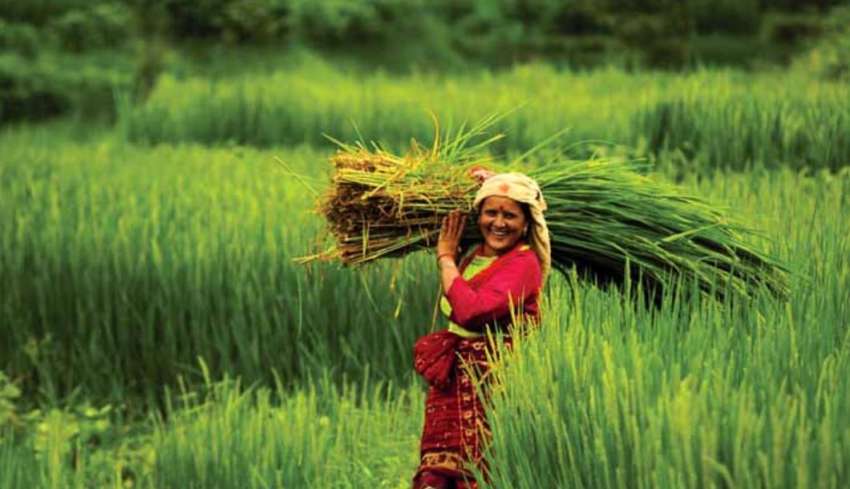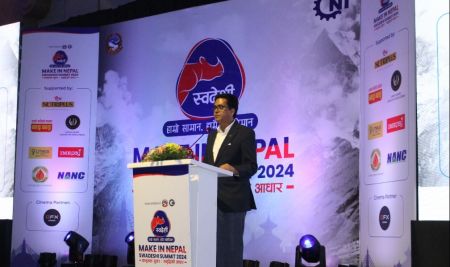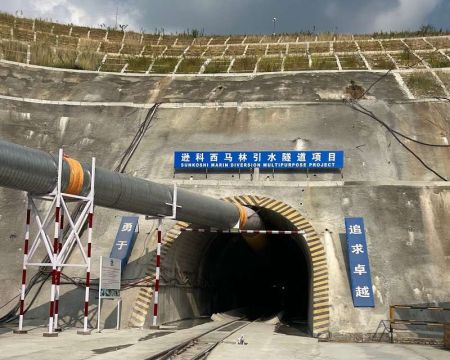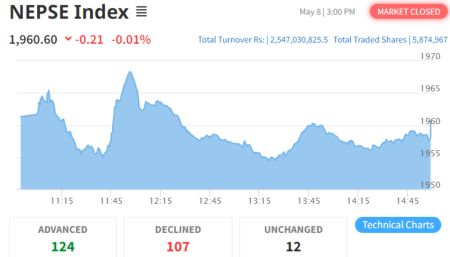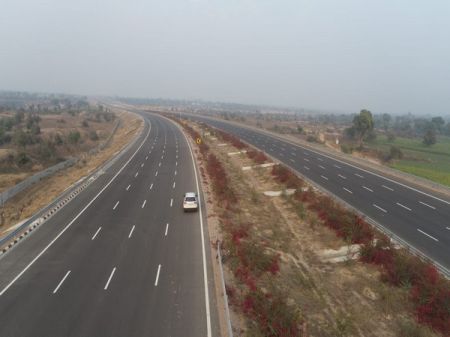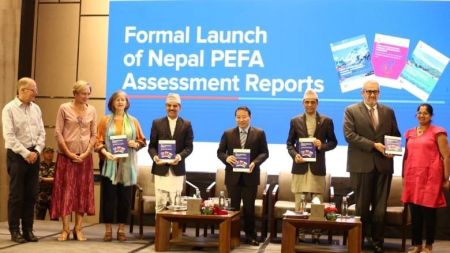BY Pradyuman Pokharel
One of the most common sights at nearly all customs checkpoints near India is the sight of long lines of trucks loaded with vegetables crossing the border into Nepal. However, these same trucks are observed returning to India empty. This situation raises an ironic question among the Nepalis: why can't Indian trucks be sent back to India filled with Nepali products, particularly some of the high-value agricultural products? After all, Nepal possesses a unique advantage due to its diverse terrain and climatic conditions, which vary rapidly from the sub-tropical Terai in the south to the cool, dry temperate and alpine conditions in the northern Himalayan ranges within a mere 200-kilometre span. This article tries to provide a comprehensive answer to this common query and explore the sector's current status, its implications on the economy and the livelihoods of its people, the challenges that hinder its progress, and potential solutions for achieving sustainable development.
The State of Food and Agriculture
There are various sources and documents available that provide detailed information about agriculture in Nepal. One of the most reliable sources for authentic data and insights related to the country's agriculture is the Ministry of Agriculture and Livestock Development (MoALD). MoALD's website has comprehensive information and data on agricultural matters at multiple levels, including local, district, province, and national levels. This repository of data is invaluable for analytical and research-oriented studies.
Additionally, there is also a research institute under the ministry - Nepal Agriculture Research Council (NARC). However, the NARC website can be somewhat restrictive, making it challenging to access information or data regarding the agricultural landscape in Nepal. Besides these official government institutions, several non-agricultural sources also provide authentic information related to agriculture in Nepal. These sources include the Nepal Rastra Bank (NRB), the Investment Board Nepal, and various other relevant ministries and departments. Additionally, numerous research articles on Nepali agriculture have been published in internationally renowned journals such as Emerald, Elsevier, Springer, and more.
While analysing the data in Table 1, we can observe that in FY 2021/22, Nepal produced 10,720,000 metric tonnes of paddy, maize, wheat, and millet. With a population size of 29,164,578, the above cereal production per individual per day comes to around one kilogramme. It shows that our country should have been self-dependent in major four cereals - paddy, maize, wheat, and millet - in terms of the country's overall population size. Also, in other productions like vegetables, fruits, livestock, etc, there seem to be no major deficiencies in terms of availability for general consumption.
The Graph 1 also shows that there has been consistent growth of agri loans from the BFIs over the last five years. The consistent growth in agri loans, however, does not correspond with the growth of agricultural productions as the share of agriculture in the total Gross Domestic Product (GDP) is as evident in the graph in Graph 1.
When there is consistent growth of agricultural loans with substantial production, there should have been a reduction in the import of agricultural products. However, the data of import suggests a different story as depicted in Table 2.
It is evident from the above data that although the country is near self-sufficiency levels in agricultural production with increased agricultural lending, the total share of agri imports in total imports has remained substantially higher. Hence, empirical research is needed to suggest required policy and procedural interventions to become self-sufficient in agricultural production and reduce imports for local consumption.
Impediments in Agricultural Sector
As illustrated in Diagram 1, the agriculture sector faces several challenges that warrant a holistic approach. Rather than treating agriculture in isolation, it should be examined within the broader context of an Agricultural Ecosystem, which encompasses six key sub-ecosystems: Existential, Social, Business, Welfare, Information, and Economic Ecosystems. Within each of these sub-ecosystems, numerous issues act as impediments to the overall sustainable growth of the agricultural sector in the country. A brief overview of these problems in each of these ecosystems is provided below, based on insights derived from relevant research papers on the sector:
● Existential Ecosystem: It is also a natural resources ecosystem that comprises of following resources: water in the form of lack of adequate irrigation facilities; land in the form of fragmented small lands thereby raising productivity and economy-of-scale issues; seeds where high-quality seeds are not available to the farmers on a timely basis; fertilisers with its scarcity; and weather due to which crop losses are common because of erratic rains, floods, etc.
● Social Ecosystem: One of the most challenging social issues is the acceptance of the agricultural profession as a respectable one for the youth. This mindset needs to be changed given the immense values enshrined with the agricultural profession.
● Business Ecosystem: There is a lack of an institutional framework with transparency and accountability. Such an institutional framework is nonexistent from the initial phase of input supply to the post-harvest phase as well as in the marketing and consumption phase. The mindset for agriculture is also not based on a business mindset but rather on the mindset of deprivation and looking for short-term monetary benefit in the form of subsidy or some other benefits. There is also a lack of collaborative initiatives at all three levels of government - federal, provincial and and local - for identifying and pursuing agri-projects of inherent strengths.
● Welfare Ecosystem: Any Government welfare scheme related to farming should be based on production and productivity rationale.
● Information Ecosystem: This is one of the most significant problems with farmers. Agricultural production does not match the demand of respective agricultural products due to the lack of an adequate information system between the demand and supply factors.
● Economic Ecosystem: It comprises both the economic plans of the government under its fiscal policy and the access to finance issues under the monetary policy for the growth of the agricultural sector. As there is a huge resource constraint in fiscal policy, adequate cognizance is needed to understand the priorities in the economic plan and policy for the agricultural sector. Similarly, a mere increment of BFIs lending in the agricultural sector does not suffice as evident from Table 1.
Enhancing Agri Productions
The challenge of achieving self-sustainability in agricultural production for the well-being of a nation's population is a complex one. Much like any common problem, it can be understood as a gap between the current state and the desired state. In the context of agriculture, this gap primarily concerns both farmers and consumers. Neither are the farmers content with their production and sales proceeds, nor are the consumers satisfied with the prices they pay and the quality of goods they receive. Therefore, a comprehensive solution to the agricultural challenge necessitates an analysis that considers the perspectives of both producers and consumers, as depicted in Diagram 2:
To address the multitude of issues and constraints outlined earlier, an extensive review of research journals and related information on the agricultural sector provides four overarching solutions. They are presented in Diagram 3 below for quick reference:
First, adopting the Agricultural Ecosystem approach encompasses both financial and non-financial components crucial for agricultural development. The financial facet includes investments and loans, while the non-financial aspect encompasses all phases of the agricultural process, from farming and harvesting to storage, marketing, and consumption. To address agricultural challenges effectively, it is imperative to supplement private and public investments and bank financing with the timely availability of knowledge, high-quality seeds, fertilisers, and equipment to farmers. Farmers should also be protected through crop insurance schemes and a buyback system where production aligns with consumer demand.
Second, aligning agricultural production with consumer demand simplifies the supply and sale of agricultural products, leading to consumer satisfaction and a well-functioning agricultural ecosystem that benefits both farmers and consumers.
Third, while the solutions outlined may appear simple, practical implementation often faces challenges. Therefore, a systematic and planned approach is required to resolve issues within the agriculture value chain. Given the challenges in Nepal, which include inefficient governance, numerous smallholder farmers, and fragmented land sizes, local units should identify their strengths in agriculture production. They should collaborate with local agricultural cooperatives to consolidate operations and achieve economies of scale. It can be further complemented by the Government, Cooperative, Private, and Public (GCPP) collaboration, with support from local private agricultural institutions and larger public agricultural companies.
Fourth, sustainable agricultural development demands a shift away from the mindset of profiting excessively from agriculture. Professional private and public companies specialising in agriculture should play a more significant role. Currently, there is a shortage of such companies in Nepal. Therefore, government entities at all levels, along with regulatory authorities, should formulate policies and procedures to encourage and support private sector investments in agriculture.
It can be hoped that, in the days ahead, the local units will recognise the critical importance of productivity and production in the agricultural sector. They should take necessary steps, following the recommendations outlined above or devising even more effective strategies, to boost agricultural production. Although challenging, achieving self-sustainability in agriculture production and consumption is not impossible when all stakeholders, including political leaders, demonstrate genuine intent and work diligently toward this goal.
(Pokharel is the CEO of Muktinath Bikas Bank and Executive Member of Management Association of Nepal)


